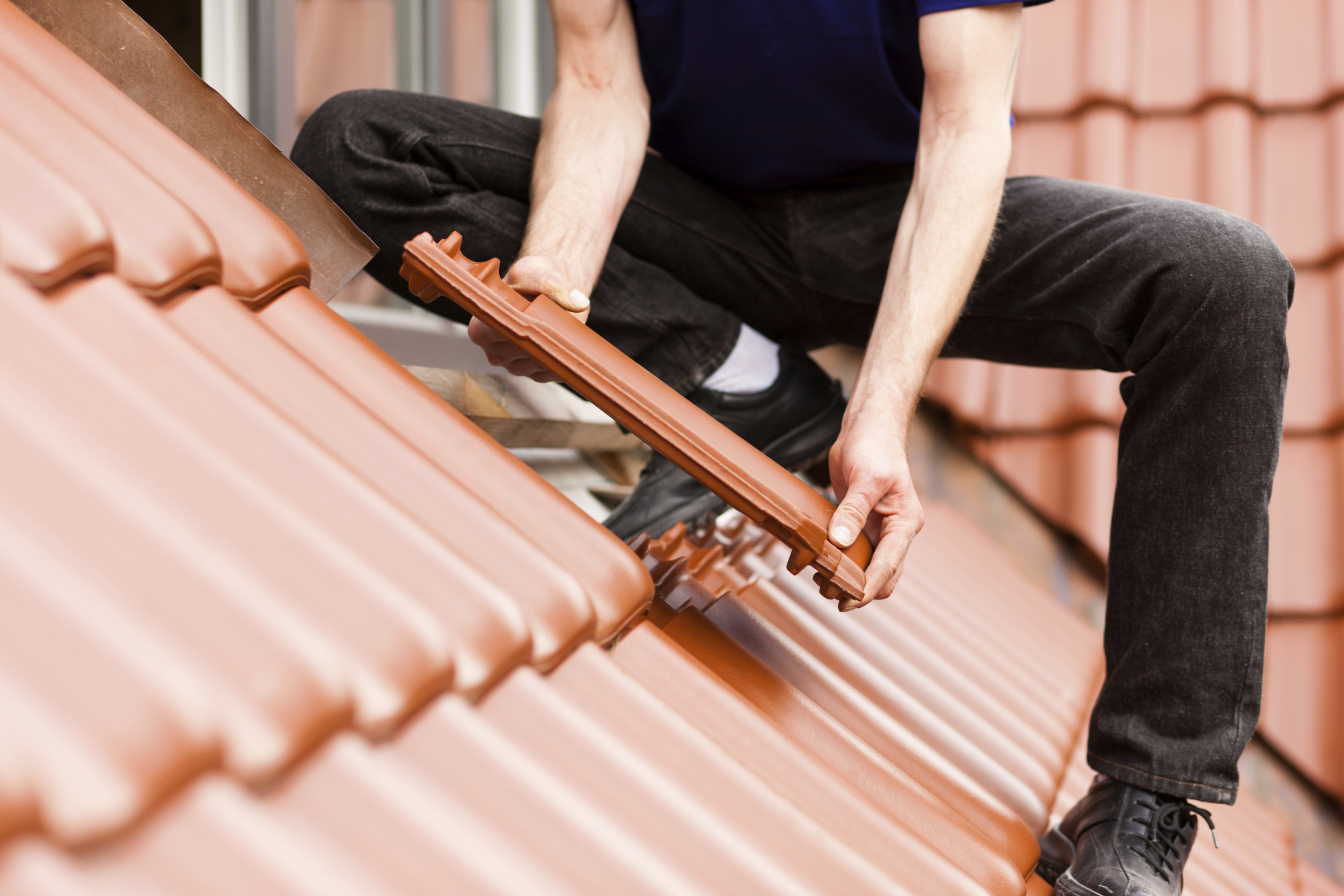Home and dry
A watertight roof is vital in the autumn and winter gloom, so get repairs done now while the weather is still (basically) nice. Julia Gray reports
The problem with roofs is that we often forget to maintain them – until, that is, they start to leak and then we’re forced to remember they need care and attention just like everything else in our homes. Also like everything else in our homes, the earlier you spot any problem, the easier and cheaper it will be to solve.
Most properties have pitched roofs covered in tiles or slates. Tiles are usually made of cement, with a lifespan of around 40-50 years, or of clay – clay tiles last longer but cost more. Slates give a lovely, traditional look and are hard wearing, but they are expensive too. Whatever it’s made of, the roof should be inspected at least twice a year, both from the outside (using binoculars) and from inside the loft. If you can see daylight in the loft, for example, there’s probably something missing on the outside.
Slates or tiles that have broken, slipped out of place, or been blown off are common occurrences. If they’re not replaced, rainwater will get into the loft, firstly causing damage there and then in the rooms below. Water staining in the loft is an early warning sign of a problem with the roof covering, so get it looked at by a reputable roofer as soon as possible.
Flashing, guttering and chimney stacks and pots can also cause leaks and damp. Again, you may be able to spot these problems yourself, but you will need a roofer to put them right, as DIY on a roof isn’t safe. It’s also a good idea to ask a roofer to give your roof a once-over if you don’t know when the roof was last worked on, if you’re not sure what to look out for, or if you can’t see the roof properly from the ground.
Surprisingly, most thatched roofs need little maintenance, apart from having the ridge redone, and can last several decades, depending on the material used and the location. While thatch is idyllic to look at though, it’s also expensive and carries the danger of going up in flames – fires are rare, but they tend to destroy the house when they do happen. There are precautions you can take against this, including having any working chimneys lined and regularly swept (at least twice a year), extinguishing a real fire before going to bed or going out, only burning well-dried wood, and not burning anything particularly flammable, such as paper. Make sure the chimney stack’s in a good state of repair, especially in the loft, and keep the loft free of combustible materials and draughts. The wiring throughout should be tested by a qualified electrician every five years to check that it’s safe.
Flat roofs also have a bad reputation, but for leaks rather than fires. They’re prone to leaks because they should have a gradient, but the gradient often isn’t steep enough. If the roof is too flat or doesn’t have an adequate structure or materials under the roof covering, it will sag, allowing rainwater to pool and eventually enter the room below. The roof covering can also crack and tear, so it’s something to keep an eye on, especially during bad weather.
For a roof with wow factor, nothing beats a ‘green’ one, named because they’re covered in plants (with other layers underneath) instead of traditional roof coverings. They have lots of benefits, including absorbing rainwater, encouraging wildlife, and reducing pollution, sound transfer and heating costs. Both flat and sloping roofs are suitable, but installation costs are high. While you probably don’t want to retrofit a green roof at home, if you’re having something built, a green roof would be a very eco addition and could last for as long as 50 years.
Latest posts by Sally - Silversurfer's Editor (see all)
- Should smacking a child be banned in England and Northern Ireland? - April 17, 2024
- Enjoy the best of the UK on a Shearings coach holiday - April 17, 2024
- Blueberry & Lemon Curd Bread and Butter Pudding - April 16, 2024
- Navigating the World with What3Words: A Lifeline for Older Generations - April 15, 2024
- Parsley Box – Bringing you time for the things you love! - April 12, 2024





















